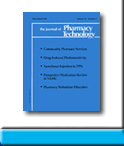 |
 |
Rifabutin-Induced Thrombocytopenia from Concurrent Use of High-Dose Fluconazole
Jane Frumin and Nancy Yunker
To request full article click here.
Objective: To report a case of—and review the literature supporting—rifabutin-induced thrombocytopenia from concurrent use of high-dose fluconazole.
Case Summary: A 34-year-old man with AIDS, on a stable regimen that included rifabutin and fluconazole for the previous 3 months, was admitted to the hospital with symptoms of oropharyngeal candidiasis. He was treated with increased doses of fluconazole 200 mg to 800 mg daily over a 9-day hospital admission. During this time, his platelet count decreased from 441,000 cells/mm3 to 24,000 cells/mm3, with no signs of bleeding. He was discharged on day 9 and instructed to omit 1 dose of rifabutin and continue fluconazole 200 mg daily. On day 12, his platelet count was 118,000 cells/mm3. About 1 month after discharge, his platelet count was 151,000 cells/mm3.
Discussion: Rifabutin is known to cause thrombocytopenia. Results from initial studies evaluating various doses of rifabutin were not conclusive as to whether rifabutin-induced thrombocytopenia is a dosedependent effect. With increased use of rifabutin, often in combination with potentially interacting medications, reports of thrombocytopenia have gained frequency. One study showed that patients on higher doses of rifabutin experienced thrombocytopenia significantly more often than did those on lower doses. When rifabutin is administered with fluconazole, there is a clear pharmacokinetic interaction, showing a 76- 82% increase in the rifabutin area under the concentration curve, with only uveitis and leukopenia reported. An objective causality assessment of this case classified the interaction between fluconazole and rifabutin, resulting in thrombocytopenia, as probable. Other causes of thrombocytopenia in our patient, including AIDS, Mycobacterium avium complex, fluconazole, famotidine, and ritonavir, are less likely.
results: One hundred twenty-six of 128 (98.4%) employees completed the survey. Thirty-five percent of employees had cholesterol levels >200 mg/dL and 23% had T-scores less than or equal to –1.0. When asked about preexisting medical conditions, 40% of those with elevated cholesterol levels reported that they had high cholesterol, and 5% with low T-scores stated that they had osteoporosis. Following the screenings 54% and 55% responded that they were at risk for high cholesterol (p = 0.02) and osteoporosis (p < 0.001), respectively. Participants who reported having had no annual physical examination but who planned to schedule a visit as a result of their screening had a higher total cholesterol level than those who reported annual physical examinations prior to the screening (207 ± 42.6 mg/dL vs 189 ± 33.2 mg/dL; p = 0.03).
CONCLUSIONS: We describe the first case of rifabutin-induced thrombocytopenia from concurrent use of highdose fluconazole. There is evidence to support this interaction and practitioners should be aware of this potential adverse effect.
J Pharm Technol 2012;28:51-7
To request full article click here.
|
|
|
||
|

